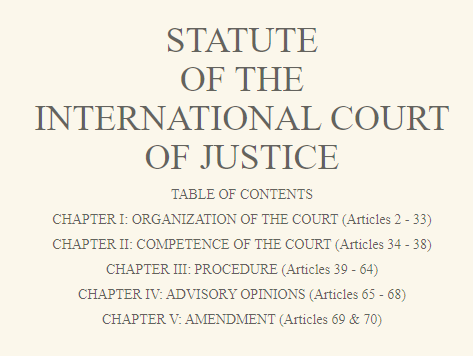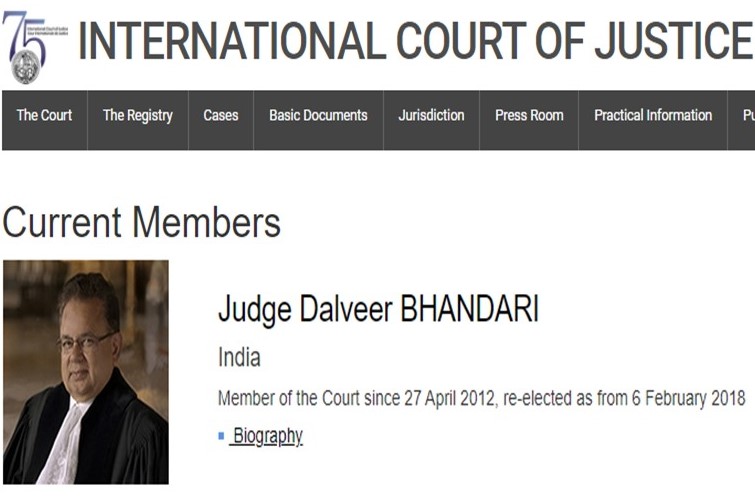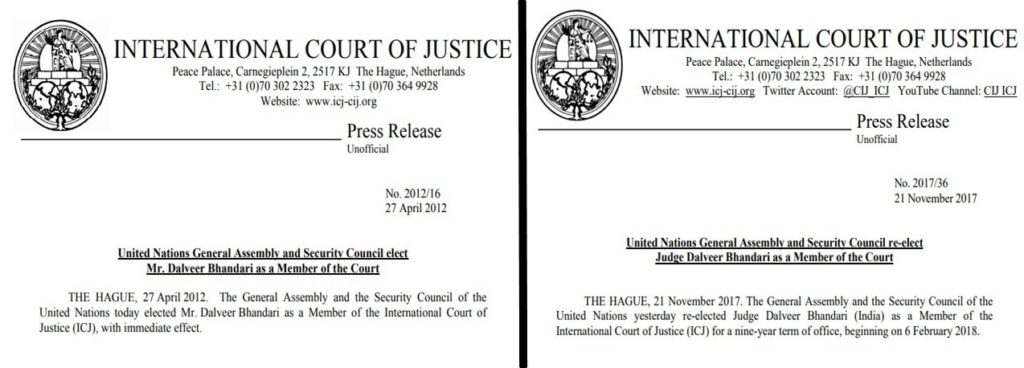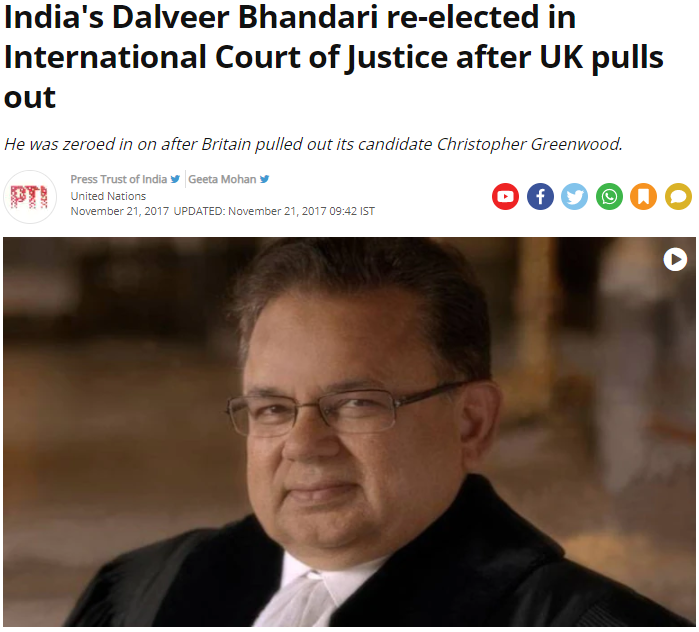A post is being widely shared on social media claiming that Justice Dalveer Bhandari has been elected as Chief Justice for the International Court of Justice. Let us fact-check the claim made in the post.

Claim: Justice Dalveer Bhandari elected as Chief Justice of International Court of Justice (ICJ) recently.
Fact: There is no such post called ‘Chief Justice’ in the International Court of Justice. Justice Dalveer Bhandari is a member of the Court since 27 April 2012 and was re-elected from 06 February 2018 for a term of nine years. Hence the claim made in the post is FALSE.
There is no mention of a post called ‘Chief Justice’ in the International Court of Justice according to the Statute of The International Court of Justice (ICJ). However, they do elect a President and a Vice-President for a term of three years each (Article 21 of the Statute of The International Court of Justice). On 08 February 2021, Judge Joan E. Donoghue (USA) and Judge Kirill Gevorgian (Russian Federation) were elected as President and Vice-President respectively.

The website of the International Court of Justice (ICJ) had enlisted all the members of the court and their posts. According to the website, there is no post of Chief Justice. Justice Dalveer Bhandari from India was enlisted as a member and not as Chief Justice.

On 27 April 2012, during the UPA regime, Justice Dalveer Bhandari was elected as a member of the ICJ. He succeeded Mr. Awn Shawkat Al-Khasawneh (Jordan) who resigned the previous year. According to Article 15 of the Statute, Dalveer Bhandari had to hold office for the remainder of Judge Al-Khasawneh’s term, until 05 February 2018. In November 2017, during the current government’s rule, Justice Dalveer Bhandari was re-elected as a member of the ICJ for a nine-year term of office, beginning 06 February 2018.

Members of the Court are elected by the General Assembly and by the Security Council. These organs vote at the same time but independently of one another. To be elected, a candidate must receive an absolute majority of the votes in both organs, that is to say, 97 votes in the General Assembly and eight votes in the Security Council as per current numbers, where no right of veto applies for the purpose of the election and no distinction is made between the votes of the permanent and non-permanent members of the Council.
When Justice Dalveer Bhandari was up for re-election in 2017, Judge Christopher Greenwood (UK) was also contesting for the same seat. Neither of them got an absolute majority in General Assembly and Security Council initially. Later, when the election was postponed, the British candidate pulled-out after knowing that the numbers were not on their side. Therefore, after the voting ended, Justice Dalveer Bhandari received all 15 votes in the Security council and 183 out of the 193 votes in the UN General Assembly. It was the first time since the ICJ was established in 1945, that there was no British Judge.

The International Court of Justice (ICJ) is the principal judicial organ of the United Nations. It was established by the United Nations Charter in June 1945 and began its activities in April 1946. The Court is composed of 15 judges elected for a nine-year term by the General Assembly and the Security Council of the United Nations. The seat of the Court is at the Peace Palace in The Hague (Netherlands). The Court has a twofold role: first, to settle legal disputes submitted to it by States, in accordance with international law, and through judgments which have binding force and are without appeal for the parties concerned, and second, to give advisory opinions on legal questions referred to it by duly authorized United Nations organs and agencies of the system.
To sum it up, Justice Dalveer Bhandari was not elected as ‘Chief Justice’ of ICJ, such a post doesn’t exist in the Court. He is currently a member of the court, elected for a nine-year term in 2018.


